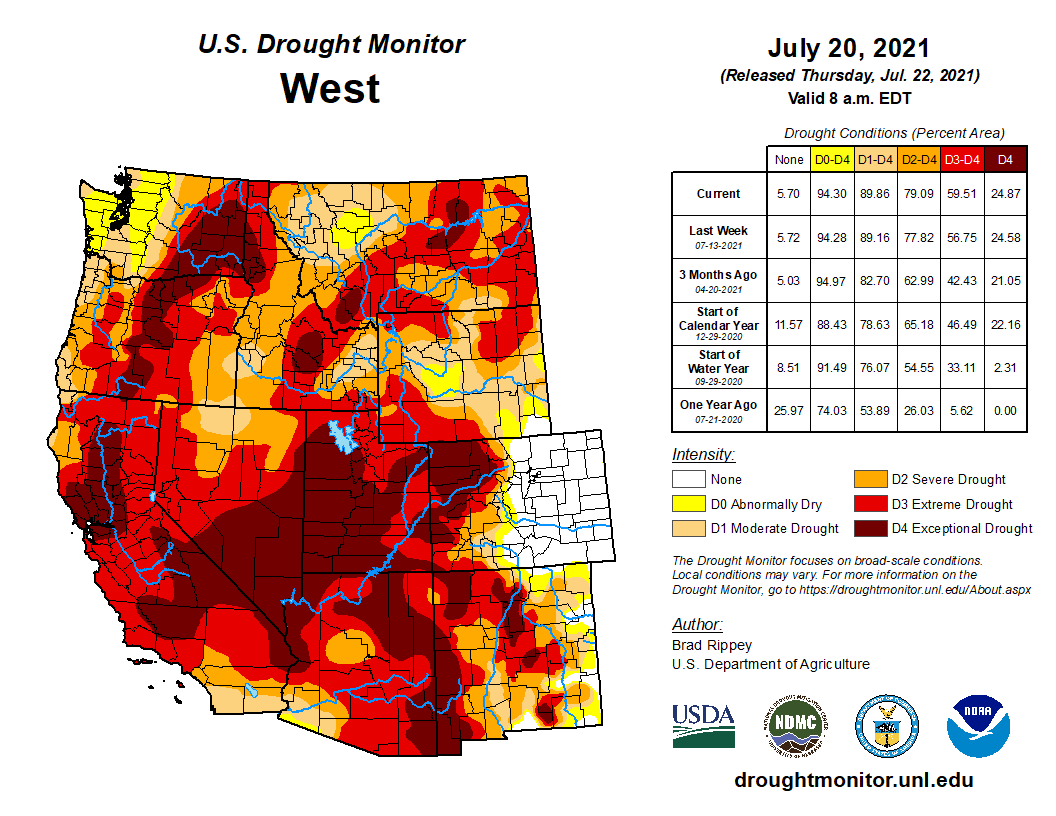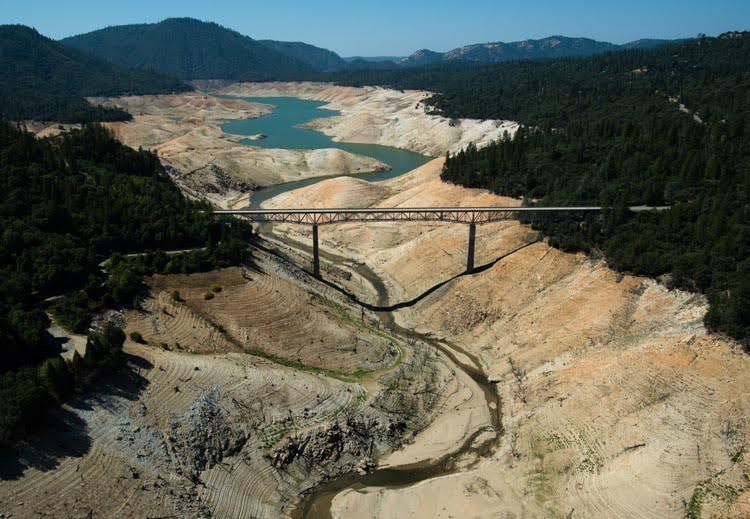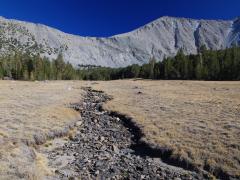For the latest forecasts and critical weather information, visit weather.gov.
New Research Finds Rising Heat Driving Western U.S. Droughts
Higher temperatures can cause droughts even with normal precipitation
Higher temperatures caused by anthropogenic climate change made an ordinary drought into an exceptional drought that parched the American West from 2020-2022, according to a new study by scientists from the University of California, Los Angeles (UCLA), NOAA’s National Integrated Drought Information System (NIDIS), and the Cooperative Institute for Research in Environmental Sciences.
The scientists found that evaporative demand, or the thirst of the atmosphere, has played a bigger role than reduced precipitation in droughts since 2000. During the 2020–2022 drought, evaporation accounted for 61% of the drought’s severity, while reduced precipitation only accounted for only 39%.
“Research has already shown that warmer temperatures contribute to drought, but this is, to our knowledge, the first study that actually shows that moisture loss due to demand is greater than the moisture loss due to lack of rainfall,” said Rong Fu, a UCLA professor of atmospheric and oceanic sciences and the corresponding author of the study, which was published in the journal Science Advances.
They predict that droughts will last longer, cover wider areas, and become more severe as the climate warms.

Historically, drought in the West has been caused by lack of precipitation, while evaporative demand played a smaller role. Climate change caused primarily by burning fossil fuels has resulted in higher average temperatures that complicate this picture. Now, droughts induced by natural fluctuations in rainfall still exist, but there’s more heat to suck moisture from bodies of water, plants, and soil.
“For generations, drought has been associated with drier than normal weather,” said Veva Deheza, Director of NOAA’s National Integrated Drought Information System and study co-author. “This study further confirms we’ve entered a new paradigm where rising temperatures are leading to intense droughts with precipitation as a secondary factor.”
A warmer atmosphere can hold more water vapor before the air mass becomes saturated, and precipitation can form. This creates a cycle in which the warmer the planet gets, the more water can evaporate from the landscape and remain stored in the atmosphere longer before it returns to earth as rain or snow. Droughts can form even if precipitation patterns remain within a normal range as higher temperatures and evaporation remove water from soils. They can last longer, cover wider areas, and be even drier with every little bit that the planet warms.
To tease out the effects of higher temperatures on drought, the researchers have separated “natural” droughts due to changing weather patterns from droughts due to human-caused climate change in the observational data over a 70-year period. Previous studies have used climate models forced by increasing greenhouse gases to conclude that rising temperatures contribute to drought. But without observational data about real weather patterns, they could not pinpoint the role played by evaporative demand due to naturally varying weather patterns.
When these natural weather patterns were included, the researchers were shocked to find that climate change accounts for 80% of the increase in evaporative demand since 2000. During the drought periods, that figure increased to more than 90%, making it the single biggest driver of increasing drought severity and expansion of drought area since 2000.

Compared to the period 1948–1999, the average drought area increased 17% over the western United States from 2000–2022 due to an increase in evaporative demand. The new analysis showed that since 2000, in 66% of the historical and emerging drought-prone regions, high evaporative demand alone could cause drought, meaning drought can occur even without precipitation deficit. Before 2000, that was only true for 26% of the area.
“During the drought of 2020–2022, moisture demand really spiked,” Fu said. “Though the drought began through a natural reduction in precipitation, I would say its severity was increased from the equivalent of ‘moderate’ to ‘exceptional’ on the drought severity scale due to climate change.”
The U.S. Drought Monitor classifies Moderate Drought (D1 on a scale of D0–D4) as falling in the top 10%–20%of historic droughts, while ‘Exceptional’ Droughts (D4) fall in the top 2%. Further climate model simulations corroborated these findings and projected that fossil fuel pollution will turn droughts like the 2020–2022 from exceedingly rare events that once happened only every 1,000 years to events that happen every 60 years by the mid-21st century, and every six years by the late 21st century.
“Even if precipitation looks normal, we can still have drought because moisture demand has increased so much, and there simply isn’t enough water to keep up with that increased demand,” said Fu. “This is not something you could build bigger reservoirs or something to prevent because when the atmosphere warms, it will just suck up more moisture everywhere. The only way to prevent this is to stop temperature increase, which means we have to stop emitting greenhouse gases.”
The study was supported by NOAA’s National Integrated Drought Information System and the Climate Program Office, as well as the National Science Foundation. Learn more about NIDIS-supported research.







